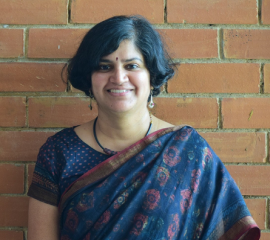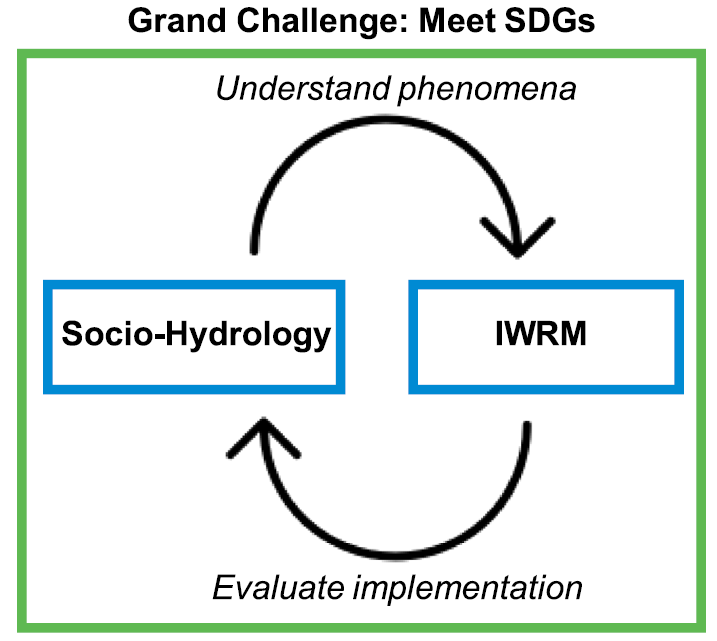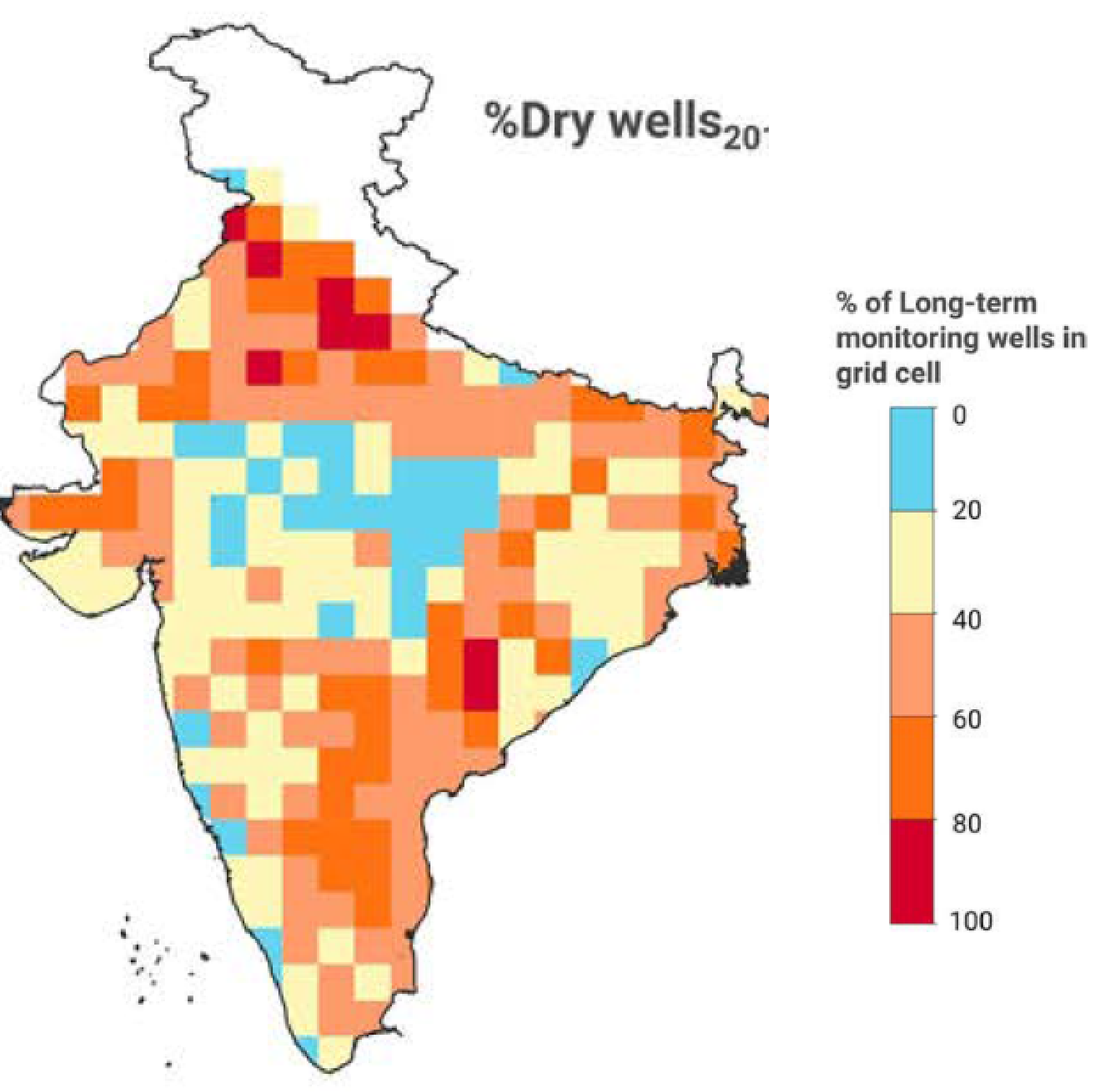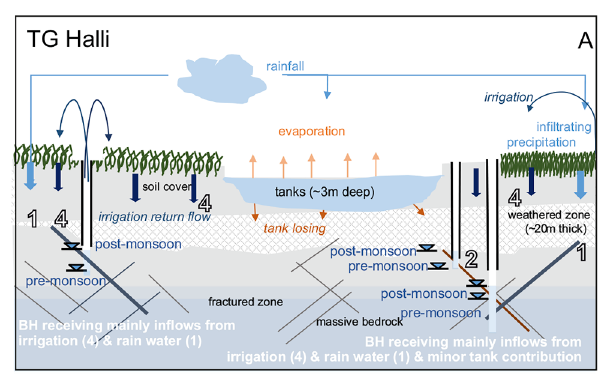Listen here on Spotify | Listen here on Apple Podcast
Episode released on July 25, 2024
Episode recorded on April 17, 2024
 Dr. Veena Srinivasan is the Executive Director of the Water, Environment, Land and Livelihoods (WELL) Labs in Bengaluru, India.
Dr. Veena Srinivasan is the Executive Director of the Water, Environment, Land and Livelihoods (WELL) Labs in Bengaluru, India.
Highlights | Transcript
- Veena’s background: Social hydrology and looking at bidirectional feedbacks between how humans influence water resources systems and how water resource systems influence human societies and decision making (Fig. 1) (Srinivasan et al., Hydrol. Sci. J, 2017)
- Change from push communication as done by most scientists to pull communication, i.e., listening to decision makers and policy makers, resulting in impactful research
- Flip around from looking back to looking forward to design better policies (design thinking rather than traditional science)
- Bengaluru is a city of 8 million people; it is the Silicon Valley of India, and was facing a water crisis (April, 2024). Bengaluru is at the top of a mountain, at a ~ 1 km elevation, and its water sources are the Cauvery River and KRS reservoir (Krishna Raja Sagara). Water needs to be pumped up to the city from these sources. The city’s periphery is seeing rapid growth but the piped water system cannot keep up, so this population is dependent on local groundwater supplies, having to rely on tanker water during droughts.
- Bengaluru’s aquifer is weathered basalt; it is shallow (~ 30-50 m thick) and underlain by fractured basalt rocks.
- Droughts primarily impact irrigation farming (paddy rice). Only 10-30% allocated to Bengaluru city and water to the city has priority.
- Bengaluru gets its water from an environmentally-sensitive area: The Western Ghats is a high-biodiversity, UNESCO heritage site, and new reservoirs shouldn’t be built there as it is an ecologically-fragile habitat.
- Cauvery River Basin: It is an interstate basin whose management is contentious, with violent state disputes.
- A potential solution for Bengaluru is wastewater recycling through centralized and decentralized sewage treatment plants.
- Poorly-treated or untreated wastewater not only reduces the reuse potential but also pollutes reservoirs when this water is discharged.
- There are no incentives to develop sewage treatment systems as residents pay very little towards STP management and fines for violation are minimal. India does not consider wastewater treatment plants as resource recovery plants.
- Could extract phosphorus from wastewater instead of importing from Africa.
- The Groundwater Recovery Paradox in South India: This is a paradox between reported rising GW levels based on GRACE satellite data and GW level monitoring (Bhanja et al., 2017) and reports of well failure (80-90%) and declining irrigated land area from shallow wells attributed to survivor bias, with dry wells excluded from trend analysis due to missing data (Fig. 2; Hora et al., GRL, 2019).
- Farmers drill very deep wells (up to 300 m) even though most productive aquifers are restricted to upper 30-50 m. This pumping is energy-intensive but electricity is free because farmers account for >50% of the voting population and politicians will not change this policy.
- Potential solutions:
- Managed aquifer recharge (MAR): Much of peninsular India saturated because of long-term MAR (≥ 20 yr)
- Solarize pumps: Farmers could sell electricity back to the grid instead of intensive irrigation
- Groundwater collectivization: Create a grid within a village; farmers sell water to others through the grid (Business as Nature, BasN), nonprofits working on collectivization.
- Financial incentivization to the local gram panchayat (village councils) give difference of electricity costs from pumping upper 30 m vs 300 m deep.
- Managed aquifer recharge (MAR): Much of peninsular India saturated because of long-term MAR (≥ 20 yr)
- Value of recharge tanks for recharging aquifers: Recharge overestimated, represent only 2% of the area, subjected to siltation, isotope data show localized effect, based on detailed geochemical study by British Geological Survey (Fig. 3) (Brauns et al., JoH, 2022).
Thought experiment evaluating any system: ‘Would I have been able to predict how it turned out if I was in 1980 even with today's tools?’. Highlights the importance of social hydrology and difficulty of predicting adaptive capacity of humans.
- Examples of human intervention:
Increase irrigation efficiency 🡪 Expand irrigated areas
Build a dam 🡪 Increase water use
- Examples of human intervention:
WELL Labs: See landscapes as transformation labs; places we study with the intention of transformation.

Fig. 1. Relationship between sociohydrology, Integrated Water Resources Management (IWRM), and the Sustainable Development Goals (SDGs). Sociohydrology and IWRM need to communicate with each other to achieve SDGs. (Di-Baldassarre et al., WRR, 2019). 
Fig. 2. Percent of dry wells in 2013 – 2016 in grid cells with higher percentages indicating high water stress (Hora et al., GRL, 2019) 
Fig. 3. Conceptual model of recharge sources in TG Halli (30 km N of the city of Bengaluru) showing relative importance of tanks, rainwater, irrigation returns (Brauns et al., J. Hydrol., 2022).



